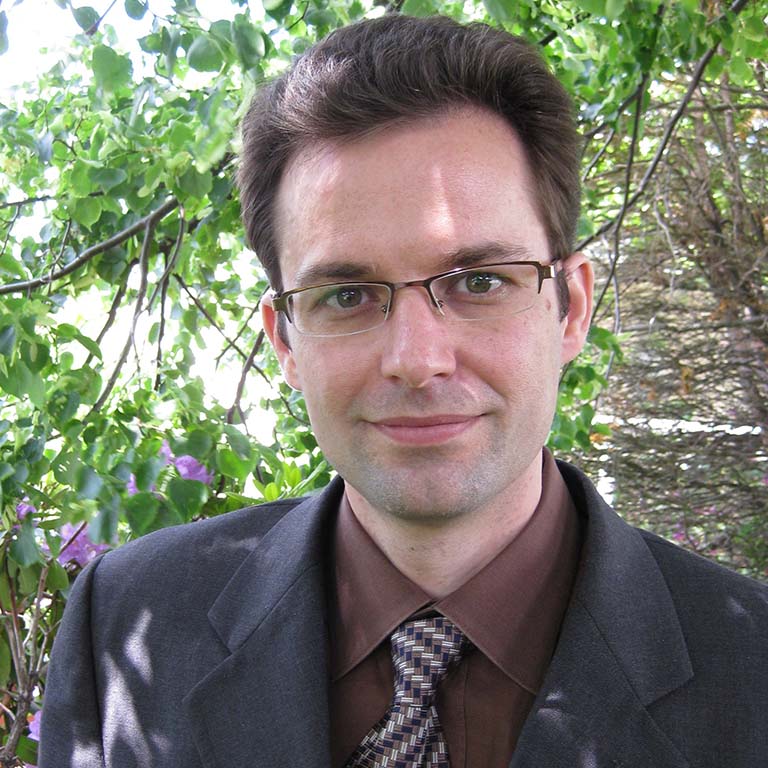- Ph.D., English, Stanford University, 2003
- B.A., English, University of Maryland, 1997

Jesse Molesworth
he/him/his
Associate Professor, English
Director of Graduate Studies
Director, Center for Eighteenth-Century Studies

he/him/his
Associate Professor, English
Director of Graduate Studies
Director, Center for Eighteenth-Century Studies
My work explores the intersection between the European Enlightenment and the literary form most often claimed as its logical outgrowth, the novel. More specifically, in my first book Chance and the Eighteenth-Century Novel: Realism, Probability, Magic I argue for the novel as an agent of re-enchantment, seeking not so much to instantiate ascendant scientific principles but, rather more radically, attempting to heal the rift between the animistic and materialist worldviews. Such a thesis guides my readings of the rise of lottery addiction, the emergence of tarot cartomancy, and the “realism” of Defoe, Fielding, Sterne, and Sade, among others.
I am currently at work at two subsequent projects: the first investigating the historical construction of time within eighteenth-century literature and culture; and the second developing a poetics of graphic storytelling and representation.
“Time and Temporality in Tom Jones,” in The Oxford Handbook to Henry Fielding (forthcoming).
“The Temporal Turn in Eighteenth-Century Studies,” The Eighteenth Century: Theory and Interpretation 60 (Summer 2019): 129-38.
“Graphic Satire: Hogarth and Gillray,” The Oxford Handbook of Eighteenth-Century Satire, ed. Paddy Bullard (2019).
“The Cosmic Sublime: Wright of Derby’s Philosopher Lecturing on the Orrery,” Lumen 34 (2015): 109-21.
“Gothic Time, Sacred Time,” Modern Language Quarterly 75 (2014): 29-55.
“Comics as Remediation: Gilbert Hernandez’s Human Diastrophism,” ImageText: Interdisciplinary Comics Studies 7.1 (2013).
http://imagetext.english.ufl.edu/archives/v7_1/molesworth/
Sterne Studies on the Eve of the Tercentenary," Literature Compass 9 (2012): 453-63.
“Syllepsis, Mimesis, Simulacrum: The Monk and the Grammar of Authenticity,” Criticism 51 (2009): 401-23.
“‘A Dreadful Course of Calamities’: Roxana’s Ending Reconsidered,” ELH 74.2 (2007): 493-508.
“Equiano’s ‘Loud Voice’: Witnessing the Performance of The Interesting Narrative,” Texas Studies in Language and Literature 48.2 (2006): 123-44.
“Temporal Geocentrism,” ASECS annual meeting, Denver, CO (2018)
“Clockwork Gothic: Walpole/Woolf,” A Literary Walpole Weekend, Lewis Walpole Library (2017)
“Nature’s Arrow, History’s Cycle,” Novel Knowledge: A Conference Honoring John Bender (2016)
“1752: Temporality and Fictionality,” ASECS annual meeting, Los Angeles, CA (2015)
“Time and the Cosmos: The Orrery in the Eighteenth-Century Imagination,” Eighteenth-Century Seminar, The Newberry Library, Chicago (2013)
“Of Plagues, Cannibals, and Zombies: Daniel Defoe and the Origins of the Zombie Plot,” Zombies vs. Professors conference, Louisville (2012)
“A Reply to the Question: ‘Can Narratives Enlighten?’” ASECS annual meeting, San Antonio (2012)
“The Hour of the Uncanny: Walpole, Lewis, Radcliffe,” ASECS annual meeting, Vancouver (2011)
“Gambling in Narrative, Gambling as Narrative,” Narrative conference, Cleveland (2010)
“The Gambler’s Plot: Modern Culture and the Problem of Randomness,” New Directions in Eighteenth-Century Studies workshop, Indiana University, 2008.
“Narrative Re-Enchantment: Sterne, Hume, Freud.” Indiana University, Johns Hopkins University, 2008
“Can the Novel Enlighten?”, Harvard University, Columbia University, Concordia University, 2007
“Humean Realism: Fielding’s Amelia and the Problem of Induction,” ASECS annual meeting, Montreal, 2006
“Natural Preternaturalism: The Gothic Novel and the Rise of Tarot Cartomancy,” SUNY-Binghamton, University of Western Ontario, University of Southern California, Clark University, 2004-6
English professor Jesse Molesworth gives a two-minute lecture on the themes of Black Hole by Charles Burns. The twelve-issue, limited edition comic book series deals with the aftermath of a sexually transmitted disease that causes grotesque mutations in Seattle teenagers in the mid-1970s.